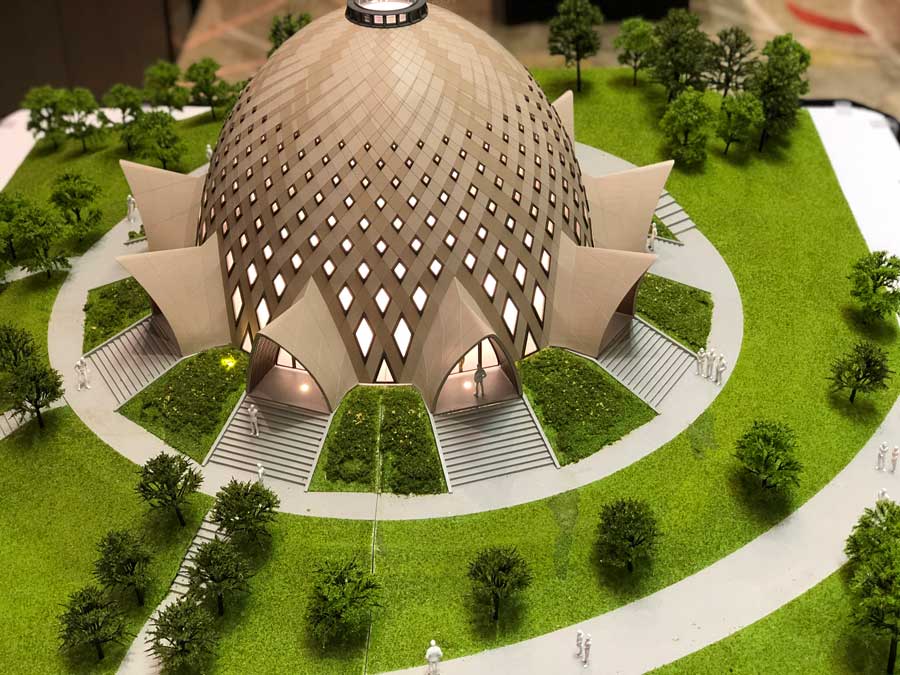In the lush archipelago of Papua New Guinea, a groundbreaking venture is stirring interest and kindling hope among local and global Bahá’í communities: the establishment of the nation’s inaugural Bahá’í House of Worship. This unprecedented architectural endeavor transcends mere construction; it embodies the synthesis of spirituality, culture, and the universal aspirations of humanity. As it rises amid tropical flora and diverse ethnic mosaics, the edifice promises not just to serve as a sacred space, but as a beacon of unity and a catalyst for societal transformation.
The Bahá’í Faith, founded in the mid-19th century, is characterized by its fundamental principles that advocate for the oneness of humanity, the elimination of prejudice, and the pursuit of truth. This new House of Worship is envisioned as a tangible manifestation of these tenets, encapsulating the spirit of Bahá’í teachings in a geographical context replete with unique cultural and spiritual significance. By ingraining these values into the very fabric of its architecture, this sacred building aims to engender a profound shift in perspective, inviting both Bahá’ís and non-Bahá’ís alike to explore the potential of communal harmony and mutual respect.
In the Bahá’í tradition, Houses of Worship, or Mashriqu’l-Adhkár, are not merely places for individual reflection; they are dynamic centers of community life and service. The design of the Papua New Guinea Temple will likely adhere to the illustrious architectural traditions characteristic of other Bahá’í Houses of Worship globally, promoting inclusivity while respecting local customs and artistic expressions. This duality illustrates the Bahá’í principle of unity in diversity, demonstrating how universal architectural ideals can harmonize with indigenous cultural motifs.
The outreach potential of the Papua New Guinea House of Worship extends beyond its physical structure. It aspires to be a spiritual nucleus that fosters educational activities, social welfare programs, and interfaith dialogue. By acting as a venue for discussions around pressing societal issues—such as education, health, and environmental sustainability—it aims to uplift the community and inspire individual empowerment. This holistic approach echoes the Bahá’í Faith’s emphasis on the need for both material and spiritual progress, suggesting that one cannot flourish without the other.
Central to its mission, the house of worship will strive to be a haven for individuals seeking solace, reflection, and connection to the Divine. It beckons a diverse audience, transcending religious affiliations and cultural boundaries. This emphasis on inclusivity is not merely an aspirational request; it represents a direct response to the global challenges of division and misunderstanding. In a world often marred by conflict and fragmentation, the proposal sends a clarion call to embrace empathy and foster understanding—concepts deeply embedded within the Bahá’í teachings.
Interestingly, the architectural vision anticipates a design infused with natural elements, integrating harmoniously into Papua New Guinea’s vibrant landscape. Drawing inspiration from the country’s multiethnic identity, architects will likely explore ways to infuse local artistic styles into the temple’s structure, embodying both beauty and reverence. Such an approach not only pays homage to the rich heritage of the region but also illustrates the adaptability of Bahá’í principles, emphasizing their relevance in a multitude of contexts.
Furthermore, the construction process can serve as a vehicle for economic growth and skill development within local communities. Engaging local artisans and laborers not only shapes the physical structure but also fosters a sense of ownership and pride among the residents. As the community witnesses the emergence of this landmark, it will likely galvanize a renewed commitment to collective action and cooperation, reinforcing the essence of the Bahá’í teachings on service and involvement.
As anticipation mounts for the completion of the Bahá’í House of Worship in Papua New Guinea, the implications for spiritual and social evolution in the region are profound. The temple’s construction stands poised to transform the community’s spiritual landscape, potentially inviting a renaissance of social cohesion and deeper intercommunity ties. It calls for a re-examination of personal and communal identities, urging individuals to reflect upon their roles in the broader human tapestry.
Moreover, this monumental project plays a significant role in the global Bahá’í community, offering a poignant reminder of the Faith’s commitment to global outreach and local engagement. As the world grapples with multilayered crises, the emergence of this House of Worship can be perceived as an invitation for a paradigm shift—a turning point towards a more harmonious coexistence grounded in respect, understanding, and shared aspirations.
Ultimately, the Bahá’í House of Worship in Papua New Guinea emerges not merely as a physical structure but as an incubator for ideas and ideals that challenge preconceived notions of spirituality and community. It channels the essence of the Bahá’í teachings into a vision of unity that resonates far beyond the confines of its walls. Thus, as its foundation is laid and its walls rise, the House of Worship stands as a testament to humanity’s collective journey towards a more equitable and spiritually enriched future—a promise of transformation that beckons all to partake in its unfolding narrative.
